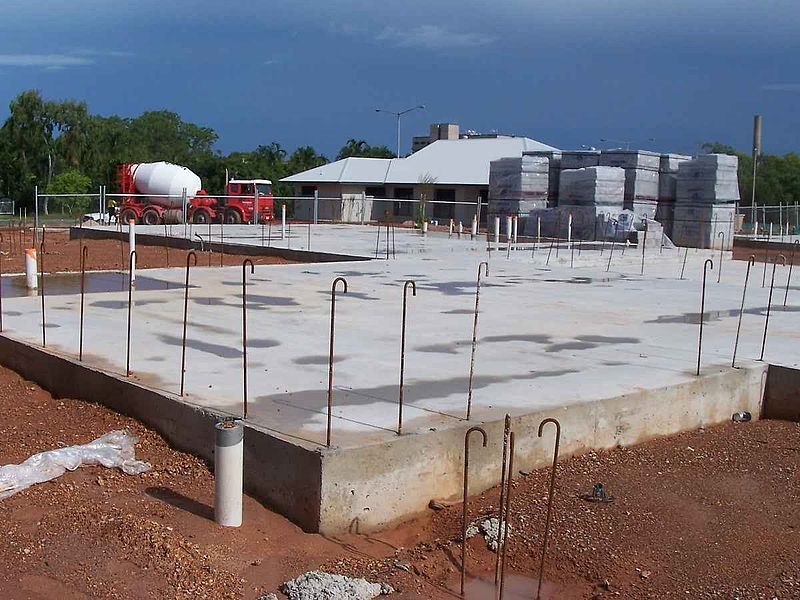The safe load-bearing capacity of a gravel or clay subsurface is rarely much greater than 600kN/m2 and can be as low as just 70kN/m2. Sedimentary rocks like slate manage about 3000kN/m2, but igneous rocks easily bear 10,000kN/m2. That is a huge range of variation.

Consequently, there are several different approaches to building foundations, and getting it wrong at the start can be a costly mistake.
Strip Foundations
Low-to-medium-rise buildings above subsoils with good load bearing can take strip foundations. This means you only need strips of concrete under supporting walls. Their width can be varied according to the subsoil. The key to success is always a uniformly distributed load.
Weather is another factor, and wherever there is a risk of freezing they must extend at least 450mm below ground level to avoid damage.
Most Victorian foundations were of this type – though made of brick – and most have survived extremely well even on soft subsoil. Problems are most common on inclined sites.
Raft Foundations
When the foundation slab extends under most or all of the building, it is called a raft. The raft is usually 150-300mm depending on the soil. They are steel-reinforced if necessary and can be combined with supporting piles and beams.


An advantage of raft foundations is that they can help exclude the ingress of things water, methane or radon.
Deep-Piled Foundations
Piles are underground columns, usually made from reinforced concrete. They are only resorted to when necessary because of the heavy equipment needed to dig or drive them in.
Often the strategy is to reach a firmer geological substratum, but they can also “float” in softer strata and rely on friction (or engineered soil compression) to retain them in place.
Areas with complex geology are a challenge for construction companies Manchester being one example. Piggott and Whitfield are a construction company in Manchester with experience of local conditions.
Piles can be constructed by excavation and infilling (bored or replacement piles) or driven in by a mechanical hammering rig (displacement piles). The latter in particular can create both noise nuisance and vibration damage to nearby buildings, and therefore there are strict codes of practice for its use (BS 5228 – see http://publicaccess.staffsmoorlands.gov.uk/portal/servlets/AttachmentShowServlet?ImageName=82975).
Piles can be interconnected with beams to ensure uniform distribution of load, but they must be constructed carefully (see BS 7937).


